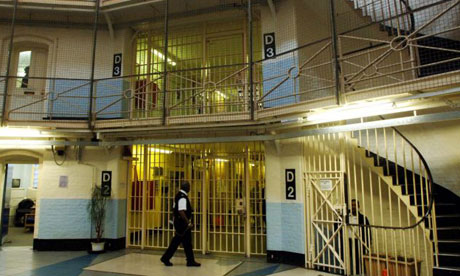
The current prison population of England and Wales stands at 85,930, exceeding the Certified Normal Accommodation (CNA) limit, – the number of prisoners who can be held in decent and safe accommodation – of 77,272. This means that 8,658 men and women are being held above safe capacity, with at least five prisons operating at over 150% of CNA.
It is well known that prisons are not fit for purpose and offer very little in terms of rehabilitation or care for some of the most vulnerable people in society, with 59% reoffending post-release after a sentence of 12 months or less. Despite this, successive governments, both Labour and Tory, have endlessly repeated the mantra that ‘prison works’ and that the way forward is through yet more incarceration.
Making the first speech by a Prime Minister focussed solely on the issue of prisons for over 20 years, on 8 February 2016 David Cameron finally admitted that the current prison model needs to be fundamentally changed – but don’t be fooled, what Cameron is proposing is nothing but a further drive towards privatisation. Cameron described his plans for a radical overhaul of the prison system, which will begin with the redevelopment of six existing prisons into ‘reform prisons’ by the end of this year. The key feature of these ‘reform prisons’ is that the governors will be given complete autonomy over the way in which they operate the prisons, control and spend budgets, educate and ‘rehabilitate’ prisoners, and manage contracts with suppliers and private corporations. Cameron called it a vision of a ‘truly twenty-first century’ prison system, a ‘wholesale reform’. In reality, however, this is simply one more step towards the creation of an unaccountable prison system ruled by market mechanisms.
Following Cameron’s speech, on 16 March 2016, the parliamentary Justice Select Committee held a ‘one-off evidence session’ on the subject of ‘prison reform’ at which Secretary of State for Justice Michael Gove revealed more about the government’s plans for ‘freestanding reform prisons’ and ‘governor autonomy’.
Gove stated that this turn in penal politics aims to reform prisoners ‘from liabilities to assets’. He said that prisoners place an overwhelming financial burden on the state in areas such as welfare and mental health services, and that ‘radically reforming’ prisons will reduce the cost to the taxpayer. Prisoners will then be able to contribute to society by acquiring ‘the habits of work’.
How exactly all this happens will largely be down to prison governors, whose autonomy will be enshrined in a new Prison Reform Bill, to be announced in the next Queen’s Speech on 18 May. This will set out the legal framework for these new ‘reform prisons’ and will also include powers for ‘failing prisons’ to be led by a governor who has ‘made a difference’ in another prison, using the same model as has been developed with school academy chains.
Gove also announced that there would be a system put in place to measure the success of ‘reform prisons’, again based on the management of academy schools:
- Aspirational measures – long-term measures which indicate how prisons will be doing over a three to five year period, based upon the quality and quantity of qualifications secured by prisoners, quality of prisoner resettlement and reoffending rates.
- Dipstick measures – short-term measures to be used by inspectors in order to assess issues such as the time prisoners spend out of their cells and purposeful activity.
- Self-assessment measures – these will be set by governors themselves with regard to how they want their prison to be assessed.
Gove’s insistence on modelling prisons on the same chaotic and disastrous system as the education system demonstrates the Conservatives’ determination to destroy central management of public sector institutions and further increase privatisation of state functions. This was made even more apparent when Gove insisted that prison governors should run their prisons using a business model of entrepreneurship, stating ‘what I want to do with reform prisons is for governors to work with outside businesses, get those businesses in, employ prisoners and allow prisons to keep the surplus’. In essence, businesses will have access to cheap non-unionised labour, and everyone will benefit, except of course the prisoners.
Cameron and Gove also emphasised plans for increased use of new technology to keep ‘offenders’ under surveillance, both inside prison and post-release, and to ‘increase security’ within prisons to stem the trafficking of drugs. Cameron stated: ‘Major new pilots will begin on satellite tracking later this year, and we will have this technology rolled out right across the country before the end of the Parliament’.
The question of prisoners’ families’ difficulties in travelling to prisons in out-of-the way locations was also raised in Gove’s evidence session. This led him to admit that the nine new prisons will be built using the proceeds of the sale of HMP Holloway and other inner-city prisons, and will be constructed on cheap land even further outside of city centres, thus making visiting even more difficult. Gove says that he will resolve this by ensuring these new locations have good transport links and appropriate facilities for families to visit. Even if these promises are honoured, they do not resolve the issue of the enormous cost for families, the majority of whom do not have the surplus funds to afford to regularly travel long distances, especially in a time of great austerity when most working class families are struggling to survive.
There is nothing ‘reformist’ about any of the Conservative Party’s policy on prisons. We cannot expect any sort of ‘true reform’ within a capitalist society that relies upon the prison system to maintain the privileges of the rich and control the working class, but even within these limits, temporary improvement can sometimes be delivered; however the ‘reform prison’ agenda does nothing of the sort. Instead it is a smoke screen, behind which the government is trying to hide its unwieldy, failing prison system.




